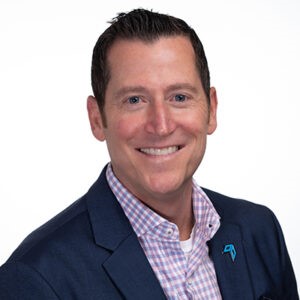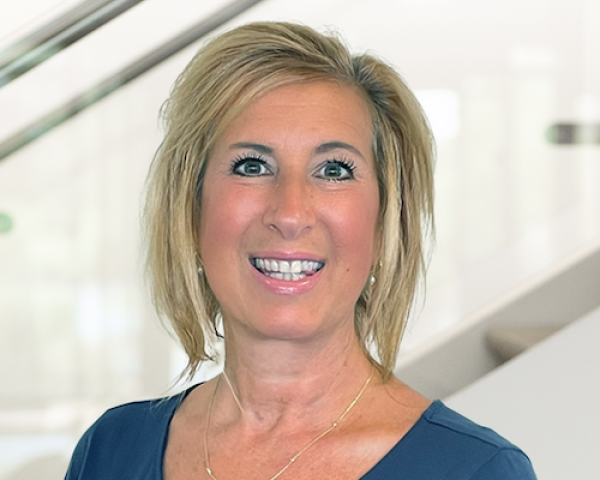|
April ITL Focus: Diversity, Equity, and Inclusion
ITL FOCUS is a monthly initiative featuring topics related to innovation in risk management and insurance.
This month's focus is Diversity, Equity, and Inclusion (DEI)

ITL FOCUS is a monthly initiative featuring topics related to innovation in risk management and insurance.
This month's focus is Diversity, Equity, and Inclusion (DEI)

|
Get Involved
Our authors are what set Insurance Thought Leadership apart.
|
Partner with us
We’d love to talk to you about how we can improve your marketing ROI.
|

Insurance Thought Leadership (ITL) delivers engaging, informative articles from our global network of thought leaders and decision makers. Their insights are transforming the insurance and risk management marketplace through knowledge sharing, big ideas on a wide variety of topics, and lessons learned through real-life applications of innovative technology.
We also connect our network of authors and readers in ways that help them uncover opportunities and that lead to innovation and strategic advantage.
Watch OneShield's panel of industry experts for a dynamic discussion of ways to enhance your advisory role, reduce risk in your portfolio and address inflationary economic conditions with a greater understanding of the commercial properties you insure.

Join our panel of industry experts for a dynamic discussion of ways to enhance your advisory role, reduce risk in your portfolio and address inflationary economic conditions with a greater understanding of the commercial properties you insure.
Learn how aerial imagery, data analytics, and property estimation tools bring a new level of accuracy and transparency to the commercial property policy lifecycle. Integrating these third-party solutions into the modern core system, insurers experience better accuracy, real-time data-informed decision-making, up-to-date values, and much more.
Watch now and learn what it takes to expand your technology ecosystem with data analytics and predictive modeling tools for better decisions about the properties you cover.

John Dunn
Vice President – OneShield Software
John brings over 15 years of experience within the insurance technology industry, working with customers of all sizes from large insurers and MGAs to county mutuals. John is a NAMIC Merit Award recipient and has served on multiple industry association committees. Prior to the insurance industry, he worked in the nonprofit sector and continues to be active today serving on committees for the University of Nebraska at Omaha Foundation, Athletics and Alumni Association. John holds a bachelor’s degree in Communication from the University of Nebraska at Omaha.

Jeff Heine
Chief Revenue Officer – Betterview
Jeff leads the company’s Sales team and is responsible for the overall Revenue function. He has extensive experience in building B2B tech startup companies, including Guidewire Software, Adsensa (now Coupa Software), OutStart (now IBM), Endeca (now Oracle), CCC Information Services, and others. Before joining Betterview, Jeff led Sales, Customer Success, and Marketing at Groundspeed Analytics, helping establish rapid growth and helping raise a sizable round of funding. Jeff holds a BS from Bradley University and Business and Entrepreneurship Certification from Hecht and Associates.

Skip Coan
Vice President – e2Value
For over 35 years, Skip Coan has been involved with insurance-to-value and risk assessment as an insurance appraiser, field risk inspector, and company executive. Skip founded CIG Property Inspections in 1996, which was purchased by Reliable Reports in 2005. Skip was the executive vice president of Reliable Reports until 2018 when he joined e2Value as the senior vice president. Skip has presented at many carrier, agent, state, and NAMIC meetings during his career.

Stephanie Vasey
Product Manager, Commercial Lines & Inland Marine – AAIS
As a Product Manager for AAIS, Stephanie is responsible for the planning, design, and management of the commercial lines and inland marine products. Stephanie is committed to providing a modernized suite of insurance products to our members. Before joining AAIS in 2021, Stephanie had 15 years of experience working in commercial lines for insurance carriers.
Sponsored by ITL Partner: OneShield
Get Involved
Our authors are what set Insurance Thought Leadership apart.
|
Partner with us
We’d love to talk to you about how we can improve your marketing ROI.
|

OneShield provides business solutions for P&C insurers and MGAs of all sizes.
OneShield's cloud-based and SaaS platforms include enterprise-level policy management, billing, claims, rating, relationship management, product configuration, business intelligence, and smart analytics.
Designed specifically for personal, commercial, and specialty insurance, our solutions support over 80 lines of business. OneShield's clients, some of the world's leading insurers, benefit from optimized workflows, pre-built content, seamless upgrades, collaborative implementations, and pricing models designed to lower the total cost of ownership.
Our global footprint includes corporate headquarters in Marlborough, MA, with additional offices throughout India.
For more information, visit www.OneShield.com
Respondents of our 2022 Insurer Tech Survey, reported that their biggest challenges include keeping up with innovation, having sufficient IT resources and staffing to implement critical strategies, and limitations of infrastructure to address new opportunities. We've just launched our 2023 Insurer Innovation Survey, and it's a great opportunity to share your perspectives and predictions – and gain immediate access to the aggregated responses from your peers as they unfold. Please share your outlook today!
The right strategic approach to technology ecosystems brings competitive advantages to forward-looking insurers. Learn how to creatively leverage third-party applications to enhance customer and agent experiences, enable automation, predictive risk modeling, and more.
The problem arises when post-catastrophe analyses are reviewed, adjusted and documented, only to be tucked away without any changes being implemented.

The storms of life exist to teach valuable lessons – literally and figuratively. In the world of insurance, post-catastrophe analysis is crucial for making effective changes in a response plan to continue improving year over year.
With insured losses around the world reaching $115 billion in 2022 due to natural catastrophes, and economic losses even higher at an estimated $268 billion, extreme weather wreaks havoc that calls for deeper analysis with a clearly planned strategic response. Individuals with varying perspectives and skill sets contribute to report on the comprehensive results of a particular storm season. We want to see the good and the bad; once we get these valuable insights, we can learn and adapt appropriately.
The problem arises when these reports are reviewed, adjusted and documented within the Catastrophe Response Plan (CRP) only to be tucked away without any changes being implemented based on the findings. Opportunities to learn from the lessons in the analysis are lost, and before we know it, the next storm season is upon us, and the cycle continues.
As we know, the insurance industry is swift to draw attention to challenges and deficiencies in processes, yet the real issue is implementing effective change in a timely manner where the impacts are evident. Resistance to doing so only causes further complaints and frustrations; therefore, nothing changes and only marginal improvement is seen. It’s time to really dig into the CRPs to make pivots that matter and that lead to more effective planning and response.
Growth requires change, which can be difficult to accept in an industry that has been doing things a certain way for many years. While tremendous expertise comes with such a strong track record, there comes a time when change is necessary. The key to a smooth transition to new procedures is to focus on what matters – the people. When leaders focus on their people, change will always be a positive thing. The key to experiencing successful change is all about finding an effective way to communicate and manage the process, while, in parallel, learning from past mistakes.
Prioritize People in the Process of Change
When industries implement change, the people affected the most tend to be an afterthought. While this may not be intentional, many leaders are focused on strategy, outcomes and the bottom line. All of this is important, but the human element must never be lost when discussing system solutions, because it takes people to interact with such solutions. Consider the hurdles and difficulties your CAT team may face with any new process, and plan ahead for questions, concerns and frustrations that may arise. We must prepare for how to address hesitation and fears. This will work to our advantage and increase adoption rates.
Consider policyholder communication. When working on your CRP, be sure to include the workflow for communication with this group. In doing this, it will be clear what will work and what won’t work. Adjustments must be made before rolling the CRP out to ease the growing pains of a new process. Reference vital policy information in an easy-to-understand method and list tips to enhance the communication between your team and policyholders. Rather than including these details on separate pages or folders, displaying them in one quick sheet can level up the customer experience and provide reassurance to policyholders in a time of change.
Implement Clear Communication Standards
Clear communication is key in a post-catastrophe response analysis. Instead of shelving problems, meet them head-on by thoroughly investigating complaints and escalations that arise during the process. In doing so, it is common to find that the root of the problem is communication, or lack thereof, that escalated the claim. In the insurance industry, we understand that keeping consumers and policyholders at the heart of communication is imperative; however, the unfortunate truth is that this is not always the case.
As we lean on tech solutions to engage with customers in the digital age, it is important to understand that flaws can still arise. To ensure that this does not happen, add details surrounding customer service touchpoints and expectations into your CRP. For instance, regardless of claim status, include a five- to seven-day touchpoint standard that includes the policyholder’s preferred method of communication. By sending personalized communications, you amplify the human element, and the customer experience is therefore elevated.
These people have likely endured trauma from a catastrophic event, and a little human empathy can go a long way.
See also: Key Learnings From Winter Storms
Leverage Data to Make It Your Most Powerful Asset
Next to your people, data leveraged properly is the most powerful force. Access to near-real-time data allows for the ability to provide world-class customer experiences – if it is leveraged correctly. Automation and insights are required to reach this level of success, as manual data mining is a time-consuming process, and we all know that in the event of a catastrophe, we are working against the clock. Keep in mind, it does take time on the front end to ensure that teams are equipped for better efficiency in the long run. We must move away from the narrative that “there’s simply no time” and invest the work in planning stages so things run smoothly when time is of the essence.
Within your CRP, include time for data mining, as this allows you to access crucial data on power outages, wind speeds, mandatory evacuations and severity of damage, as well as imagery to support the data – this can all be accessible within 24 to 48 hours. This will allow you to establish rules around making applicable payments toward ALE benefits, triaging claims to more effectively allocate adjuster resources and personalizing communications to policyholders on a situational basis.
Off-season is the ideal time to create, communicate and train on a strong CRP that pushes boundaries and opens the door to new possibilities for top-notch response during catastrophic events. Cultivate strategic partnerships into your plan to become an unparalleled force in the industry and prioritize people, communicate standards and leverage data for ultimate results. And, of course, always be prepared to pivot, as both the consumer and the weather always tend to evolve.
Get Involved
Our authors are what set Insurance Thought Leadership apart.
|
Partner with us
We’d love to talk to you about how we can improve your marketing ROI.
|

Troy Stewart is president and chief operating officer at Brush Claims.
Stewart started at Brush Claims 12 years ago as a field adjuster, then shifted into a quality assurance review position, where he rose to the ranks of vice president of daily claims. Appointed as COO, president and partner in 2018, Stewart was essential in the development of Brush Claims’ software suite Hubvia. He also played a large role in the evolution of the HyDAP claims handling program, which boasts a 68-hour cycle time.
In 2021, Stewart participated on behalf of Brush Claims in cohort seven of the prestigious Lloyd’s Lab by Lloyd’s of London.
Intelligent Document Processing can record information from every channel and standardize it seamlessly, creating a much-needed layer of centralization.

Over 90% of customers feel that the companies they buy from could improve their onboarding processes. The same study reveals that 63% of customers say that onboarding—the level of support they’re likely to receive post-sale—is an important consideration in whether they decide to purchase in the first place. While statistics like these may shock business leaders, they are a wake-up call that it’s never too late to innovate and optimize the onboarding experience.
Many companies focus too much on the lead generation and conversion processes without thinking about what happens after closing the deal. This especially applies to insurance companies, whose complex onboarding operations can take two or more weeks. Today, experts recommend customers review their insurance plans every six to 12 months and make a switch every two years—but this can be challenging in the midst of verification, processing times and the endless heaps of paperwork being passed back and forth between agents and customers. Industry leaders must make changes to prioritize the customer experience and increase profitability in tandem.
Onboarding new insurance customers can be challenging, but building solid foundations for your clients to thrive is crucial. Providing a smooth and efficient onboarding experience for your customers will help you gain their trust and loyalty, and it sets the tone for a positive long-term relationship. Intelligent document processing (IDP) solutions are a great way to simplify the onboarding process internally, so your employees can focus on providing better support.
By optimizing the onboarding process, business leaders can ensure that customers feel valued and informed and are more likely to stay with your insurance company for years to come.
Streamline The Paper Trail
When insurance companies onboard a new customer, they face an onslaught of documents. These documents come in different formats—PDF, paper, image, etc. There is no “standard” for how these documents are structured or formatted, and this means agents must manually compile emails, PDFs, physical copies and more into their data collection platforms, skimming each document to find the most important information amid numerous fields and disclosures.
Lack of organization creates serious risk for insurance companies and the customers they serve. With agents manually reviewing and uploading documents, important customer information can slip through the cracks or be captured incorrectly. Manual document processing relies on human eyes to catch important data, identify errors and spot the signs of fraud. With insurance fraud costs in the U.S. reaching $308.6 billion annually, obviously manual document processing isn’t cutting it.
Intelligent document processing (IDP) takes the burden of document management off of insurance agents. IDP can record information from every channel and standardize it seamlessly, creating a much-needed layer of centralization to the onboarding process. IDP solutions also improve security, with some options providing role-based access restrictions, complete audit trails and data encryption to ensure that customers’ data is kept safe from security breaches.
See also: Why Is Onboarding So Hard?
Embrace Digitization in Customer-Facing Processes
As an insurance company, you want your customer-facing processes to be as simple and streamlined as your internal operations. By digitizing the front end of your processes, your clients can fill out applications that will give insurance agents the information they need to create a personalized experience and provide them with the information they need regarding their new insurance coverage.
From the customer’s perspective, self-service options make things faster, easier and better—and, according to HubSpot, 77% of customers say they view brands more positively if they provide self-service options for customers looking for support. From the insurance agent’s perspective, it is easier to retain customers and boost loyalty through these digital transformations, thus improving the revenue cycle.
Digitization can go beyond the early application stages. You can empower customers to navigate your policies independently via your own online portal or mobile app. Include tips, tricks and tutorials to help guide them through the onboarding process without the need for time-consuming email threads or frustrating call-center wait times.
Employ Automation
Automation is a great way to enhance customer service and save agents' and clients’ time and money throughout onboarding. At my company, ibml, we pride ourselves on delivering solutions that automate capturing, classifying, validating and exporting customer information.
Research shows that 41% of consumers are likely to change their insurers due to a lack of digital capabilities. If you want to strengthen the relationships between your company and your customers, transforming your onboarding processes for the digital era is the first step. I urge all insurance companies to show their policyholders that they are ready to support the customer experience before, during and after they convert. Just like any other partnership, these relationships are a two-way street, and your onboarding process is the first impression to creating a valuable relationship that lasts.
Get Involved
Our authors are what set Insurance Thought Leadership apart.
|
Partner with us
We’d love to talk to you about how we can improve your marketing ROI.
|

Susheel John is vice president marketing and strategy at ibml, the world leader in high-volume intelligent capture automation.
Many insurers are turning to AI technology to supplement their current employee education and institutional knowledge management strategies.

Insurance companies around the globe are facing one of their biggest challenges to date: a workforce shortage, magnified by the Baby Boomer generation’s retirement, the migration of skilled labor during the Great Resignation and shrinking pools of aspiring insurance professionals among Millennials and Generation Z.
According to the U.S. Bureau of Labor Statistics and the National Association of Mutual Insurance Companies, 50% of the current insurance workforce will retire in the next 15 years. In many cases, the highly nuanced knowledge these professionals have developed over the years will retire with them. This “retirement brain drain” is exacerbated by supervisors finding themselves increasingly short on time because they need to do more with fewer resources. Due to the considerable amount of time it takes to manage key tasks and processes, they have little time to train new employees, making this challenge more acute.
So, what can you do to safeguard your organization’s most valuable data, including the information that only lives in the heads of your most seasoned professionals? Hands-on training and job shadowing are incredibly important and have been used for decades to train new employees. However, they can only do so much to ensure relevant industry knowledge is preserved and passed on to the next generation of workers, especially given the high retirement rate of many veteran insurers.
To combat this growing problem, many insurers are turning to AI technology to supplement their current employee education and institutional knowledge management strategies. Specifically, they are training AI models with terabytes of data from industry data lakes along with their own internal datasets. This enables AI models to learn from a wide variety of scenarios insurers might encounter when underwriting or resolving claims. Many AI solutions now even ingest and learn from unstructured data—like the notes adjusters have made over the years about specific claims.
AI can serve as a virtual digital assistant, automatically scanning all aspects of claims data and updates to identify attributes or events that may affect claims’ cost and duration. Unlike a human, the digital assistant can work 24x7, read and understand millions of policies and claims, has total recall and never gets tired. It can detect a myriad of factors such as updated notes, comorbidities, psychosocial factors, recent medical tests and diagnoses that may affect a claim’s severity. Armed with this insight, the digital assistant can triage and prioritize claims, reducing claims cycle times and losses. It directs the adjuster to what needs the most attention and when to act to ensure maximum claimant satisfaction and profitability. Similarly, on the underwriting side, a virtual digital assistant can examine a policy and use its learnings from millions of other policies and third-party data to give underwriters deeper insight into policy risks to help them price more accurately.
The virtual digital assistant can give both underwriters and adjusters more confidence in making decisions. It provides valuable guardrails for the new underwriter or adjuster, and, for the experienced professional, AI amplifies what they already know and do, enabling them to accomplish more at a higher quality level with less work and time.
See also: Predictive Modeling’s New Mantra
AI Upskills the Insurance Industry
It’s encouraging and frankly exciting to see the 500-year-old insurance industry starting to lean into AI and other supportive technologies the same way they embraced digital transformation. We are now seeing AI grow in its adoption exponentially in both underwriting and claims management.
In a recent webinar, leaders from both MEMIC and Builders Mutual Insurance shared how their companies have benefited from using AI technology to upskill and knowledge-share with newer employees. Greg Jamison, senior vice president of underwriting at MEMIC, explained how AI models have helped the underwriting side of the business build dashboards to better understand and quantify underwriting risks. He remarked, “We leverage not only our own internal data but Gradient AI’s [industry data lake].” Ken Bunn, vice president of claims at Builders Mutual Insurance, found that AI enables new adjusters to benefit from models that have learned from millions of past claims and “provides guardrails for our newer folks. For example, new adjusters can learn from the predictions that the models make to help them better assess a claim’s severity and gain insight into how to properly reserve a specific type of claim."
See also: Don’t Get Left Behind
Using AI Models to Upskill Insurance Professionals
AI technology offers an increase of depth of training and knowledge-sharing beyond because it leverages expanded access to datasets. As more companies make AI part of their business operations, here’s what I expect they’ll find:
Get Involved
Our authors are what set Insurance Thought Leadership apart.
|
Partner with us
We’d love to talk to you about how we can improve your marketing ROI.
|

Stan Smith is the founder and CEO of Gradient AI.
He has been working with AI and technology companies for nearly 30 years. Prior to Gradient AI, he held founding or executive-level roles with multiple startup companies, including MatrixOne, Agile Software, and OpenRatings. He also led development of several patents, including technology that predicts bankruptcies, a global database to improve supplier performance, and technology that enhances performance management through lean initiatives.
Smith earned his bachelor’s degree from Dartmouth College.
AI has the potential to revolutionize the claims process by reducing costs, increasing efficiency and improving accuracy.

As the healthcare industry evolves, insurance payers are looking for innovative solutions to improve their claims process. One such solution gaining traction is the use of artificial intelligence (AI) technology. AI has the potential to revolutionize the claims process by reducing costs, increasing efficiency and improving accuracy.
The complexity of healthcare claims processing has been a mounting issue for provider revenue cycle management professionals for some time. Staffing shortages, training challenges and the need to keep up with payer policies and governmental regulations have created a perfect storm. This problem is only intensifying and will affect the payer side, possibly causing more unclean claims to be submitted and endless workstreams as claims are denied and resubmitted.
As insurance payers continue to face challenges from the provider side that affect claims processing, both parties can benefit from AI as a solution. Here’s how AI can help insurance payers in their healthcare claims process:
Faster Claims Processing
One of the most significant benefits is speeding up the entire process. With AI-powered automation tools in place, insurance payers can quickly sift through large amounts of data related to patient information and medical procedures provided by providers. This helps identify potential issues that could lead to rejection or denial early in the process.
By automating repetitive tasks such as data entry and pre-authorization checks with robotic process automation (RPA) and machine learning algorithms, insurers can increase productivity while freeing staff time for more complex tasks like handling appeals and resolving disputes.
Improved Accuracy
Another key benefit of using AI in healthcare claims processing is improved accuracy levels when identifying fraudulent activity or errors within submitted claims. By analyzing vast amounts of historical data on previously approved or denied claims, AI spots patterns and trends that can be used to flag suspicious activity before it becomes an issue.
Using machine learning algorithms helps insurers detect fraud patterns much quicker than traditional methods would allow for, which translates into increased accuracy levels while reducing false positives.
Enhanced Cost Savings
Healthcare costs continue to rise each year due largely to inefficiencies within healthcare systems themselves -- this includes providers and payers alike.
AI technologies enable insurers to identify areas where cost savings can be made across their operations by automating manual processes such as claim adjudication or billing reconciliation, reducing administrative overheads while minimizing errors associated with human intervention.
Moreover, because AI-driven algorithms analyze large amounts of historical data on past claim submissions and payments made against similar services, they’re able to identify and predict future payouts based on existing trends. This leads to better decision-making and lower costs overall because unnecessary payouts aren't made.
See also: Can AI Solve Health Insurance Fraud?
Streamlined Workflow
Using advanced analytics capabilities from machine learning algorithms provides insurers with an opportunity to optimize internal workflows, resulting in greater efficiencies across all aspects of their business, especially those related to health system operations, such as underwriting policies or managing risk pools.
For example, predictive modeling techniques help identify high-risk patients, allowing insurers to develop tailored plans and reduce the likelihood of re-admission, saving money downstream and improving value-based care delivery models.
Ensuring Regulatory Compliance
Insurance payers need to comply with numerous laws and regulations set forth by local state governments and federal entities alike - including things like HIPAA laws, privacy rules and mandates from CMS. Failure to meet these requirements often results in fines, penalties and lost revenue streams, all of which hurt bottom-line performance figures and long-term viability in businesses involved in the healthcare space.
AI-powered solutions offer compliance monitoring tools that automatically flag any deviations from regulatory guidelines, enabling staff to take corrective action early and ensure continued adherence to best practices throughout the organization.
AI is certainly taking off not only in the healthcare industry but in many sectors and offers significant benefits for insurance payers and providers alike looking to streamline their processes and improve accuracy in the claims process. If you're an insurance payer looking find ways stay ahead of the curve, then adopting and promoting technologies like machine learning and AI should definitely be a top priority.
Get Involved
Our authors are what set Insurance Thought Leadership apart.
|
Partner with us
We’d love to talk to you about how we can improve your marketing ROI.
|

Clarissa Riggins is chief product officer with Experian Health.
Before any operation can set realistic KPIs that resonate with employees and customers, there are three safety checks that position it for success.

While Ralph Waldo Emerson’s words inspire travel and grace countless knick-knacks, many COOs may roll their eyes at his focus on the journey over the destination. After all, key performance indicators need to be met for continued growth, client satisfaction and even those coveted team bonuses. The destination cannot be tossed out the window like a banana peel.
As with any road trip, organizations cannot get to destinations without a solid foundation in place. And by setting realistic KPIs, organizations can still achieve change, with fewer potholes along the way.
Is the vehicle safe for highway travel
Before jumping in a car for a long journey, a safety check is the prudent first step. In the business world, before any operation can set realistic KPIs that resonate with employees and customers, there are three safety checks that position it for success:
Making sure there is strategic alignment is critical to setting key performance indicators. The operation must have a tactical orientation to the business’ strategy; it shouldn’t be an independent plan. Everyone involved should know how they fit in and how the work they do enables the business’ larger strategy. If the team is working on anything that doesn’t align with the strategy, it needs to be reevaluated and challenged.
Once there is a solid foundation, a critical need is an inspiring and compelling vision that is simple and resonates with the employee base. This vision serves as reason for getting in the car and driving to the destination. i.e.. the Grand Canyon. Employees will want to be on the journey when they’re interested in the destination. The destination/vision I’ve added to the GPS for my team is to be the customer’s first choice for life insurance by delivering innovative solutions.
The operation must have clear objectives that line up with and enable the overarching strategy. These should be measurable, actionable and outcome-based, serving as the “why” for the whole journey.
Hitting the road
With those three elements laying a solid foundation for a sturdy, road-worthy vehicle, realistic and meaningful KPIs can now be formed. There are a few things to keep in mind:
See also: 3 Fatal Mistakes Risk Consultants Make
Road rules
When setting new performance indicators and driving significant change, there are three best practices that keep everyone safely moving toward the target: mindsets and behaviors, change management and rewards and recognitions.
Establishing mindsets and behaviors that are expected from the team grounds them in habits that drive a shift in culture. Things like collaboration, accountability, agility, innovation, process improvement and being data-driven are just a few examples of mindsets and behaviors to which I hold my team accountable.
Cars don’t just swerve into a new lane without turn signals -- well, the good drivers don’t -- and a strong change management program acts as that trusty blinker. By leveraging a well-thought-out change management program, KPIs are met more easily and with less resistance. It's imperative to have a change plan mapped out that ensures the team is aware in advance of the change, understands the benefits to them, the business and customers, is given the right training and is rewarded for adopting the change. Having a clear map will also enable the team to bring stakeholders on the journey and manage any resistance.
No road trip is complete without some fountain sodas and snacks. Don’t forget to connect reward and recognition programs to the desired behaviors and outcomes. When a team member is exhibiting the actions driving expected outcomes, they should be rewarded. Rewards will reinforce the change and help the team achieve the KPIs, ultimately meeting the broader business goal.
There’s a lot to be said for the journey, but having a clear destination in mind can help the journey fly by so that when someone asks, “Are we there yet?” the answer is "yes." With these tips in mind, don some sunglasses, get a full tank of gas and hit it.
Get Involved
Our authors are what set Insurance Thought Leadership apart.
|
Partner with us
We’d love to talk to you about how we can improve your marketing ROI.
|

Michelle Buswell serves as senior vice president and chief operating officer at Legal & General America.
Buswell leads the underwriting and operations functions. She is a director on the boards of Banner Life Insurance and William Penn Life Insurance Company of New York.
Buswell joined LGA from the Hartford Insurance Group, where she was the senior vice president of service operations, responsible for the operations strategy and delivery of client services for middle, large, global specialty, premium audit, billing and licensing and contracting operations.
She holds a bachelor of science in business administration with a specialization in finance and a minor in economics from Eastern Connecticut State University. She is on the executive board of Insurance Innovation, is a former board member of Our Piece of the Pie and is involved with multiple charitable organizations, including the American Heart Association.
Unusually warm water in the Gulf of Mexico is expected to produce more tornados than normal this year, possibly many more than normal.

The tornados that killed at least 26 people in Mississippi and Alabama and flattened towns in the Delta region over the weekend come amid dispiriting reports about the extent of natural catastrophes in 2022 and projections that they may even intensify in 2023.
Swiss Re reported last week that economic damages from natural catastrophes totaled $284 billion globally in 2022 (with less than half of that insured). The total is far above the 10-year average of $220 billion. State Farm recently reported a $1 billion INCREASE in hail-related claims, to $3.5 billion in 2022. The number of claims climbed by 45,000 at State Farm last year.
The La Nina weather phenomenon officially ended in early March, and an El Nino is expected to form throughout the summer, increasing temperatures and boosting the likelihood of the violent storms that just laid waste to parts of Mississippi. And unusually warm water in the Gulf of Mexico is expected to produce more tornados than normal this year, possibly many more than normal.
No rest for the weary....
What concerns me most, especially in the wake of the devastation in Mississippi and Alabama, is this Washington Post article about the potential for an especially bad tornado season. The article cautions that tornado forecasting is in its infancy but says meteorologists believe "there may be ties between [Gulf of Mexico] sea surface temperatures and the frequency and intensity of severe weather events in the U.S. Deep South in particular."
With water temperatures several degrees above normal, and even reaching into the high 70s, the article reports:
"The year has already been off to a historically active start, with a preliminary total of 168 tornadoes touching down across the Lower 48 states in January. That’s the second-most on record. In February, there were 55 tornadoes — double the average of 29. Oklahoma reported 17 tornadoes in January and February. The average during that window is one. On Jan. 16, two tornadoes spun up in eastern Iowa, the state’s first January tornadoes in 50 years. Alabama also logged 29 tornadoes during January, smashing state records."
As I wrote at the beginning of the year, the end of the unusually long La Nina could usher in the hottest year on record, adding energy to storms. That temperatures across the South and Southeast have been hovering 3 to 6 degrees above normal may well have contributed to the extraordinary violence of the recent tornados in Mississippi and Alabama. One tornado produced winds that reached 170mph and traveled nearly 60 miles -- less than 1% of tornados in the U.S. travel even 50 miles. After that tornado lifted off the ground, another formed, reaching winds of 155mph and traveling nearly 30 miles.
The one bit of good news is that the emergence of El Nino tends to mute the formation of hurricanes in the Atlantic, but it also usually promotes tropical storm activity in the Pacific, while increasing the risk of wildfires because of the higher temperatures.
At a time when there is a lot of talk about how insurers can switch to a "predict and prevent" business model, I'd love to offer a way to help customers batten down the hatches and prepare for what looks like a season of unusually violent storms, but I'm not sure there's much to be done -- in the long run, sure, but not so much in the short run. All I can figure is that we as an industry need to prepare our organizations to help clients recover as quickly and painlessly as possible when the storms come.
Cheers,
Paul
Exceptional product designers harness emotions that serve as the basis for purchase decisions. What if insurance specialists were included in this process?

The concept of embedded insurance is familiar, yet we leave value on the table when we consider it solely from a “point-of-sale” perspective. The opportunity we miss is to weave protection in at the “point-of-design,” an approach that has the potential to realize the vision of embedded as a $70 billion market for insurers by 2030 (Conning, 2023). In fact, embedded insurance may help insurers reduce the over $1 trillion insurance protection gap by making protection a part of products.
Imagine a future in which protection solutions are woven into everyday products in ways that inspire the same surprise and delight as a car that detects who you are and adjusts mirrors and seats to your settings automatically, or a phone that fits perfectly into your palm as if it were made for it, or a music-streaming service that has learned the beats and melodies that you prefer and accurately recommends the tracks you’ll love. Protection services can be like that, too.
Form follows emotion: Weaving protection into product design
What if product, service and space designers incorporated unmet or under-addressed protection needs to weave insurance solutions into industrial design?
Great design entails a practical understanding of how consumers are likely to interact with the product or service coupled with the broader context of the user’s experience. We can think about this as the consumer’s “comportment” toward a product or service.
“Comportment” describes the relationship between the consumer and the product. It describes how consumers interact and engage with products and services and how they perceive it is intended to be used or consumed. Understanding this relationship is key to determining how to design products and services that will meet and exceed consumers' underlying needs. It is this insight that makes it possible for designers to create that “wow factor,” experienced when the form of a product or service intuitively “makes sense” and addresses an un/under-expressed need.
Exceptional product designers observe and empathize, listen and read between the lines and match shape and flow with what may be un(der)expressed customer needs. They harness experience and emotion that serve as the basis for purchase decisions. What if insurance underwriters and product specialists were included in this process and, together with their design counterparts, explored means of weaving protection services into the design of everyday products and services?
What if insurance underwriters and product specialists played a role in the product/service design process and had access to the same observations and insights as the designer?
Realizing this vision begins with re-framing the concept of embedded insurance from a bolt-on model to imagining embeddedness applied at the point-of-design.
An analogy: Levi’s trucker jacket with Jacquard by Google
In 2019, Google and Levi’s partnered to develop and launch a line of connected clothing. The Jacquard trucker jacket, interwoven with conductive fibers, is complemented by a sensor fob connected to a cellphone app that allows users to control some of their phone’s functionality through swiping the fabric. Users can manage calls and texts, query Google Assistant and control media through contact with the jacket.

Image from Google/Jacquard.
Google and Levi’s were natural partners in this venture. Google brought the augmented fabric solution, sensor technology and the power of their technology brand while Levi’s brought clothing manufacturing capability, market access and their globally recognized clothing label. They collaborated to create a hybrid product that addressed both fashion and adjacent lifestyle needs in a way that enhanced the wearer’s experience.
Embedded insurance, developed from the point-of-design, is aligned in concept with the wearable technology solution that Google and Levi’s developed. We can amplify exceptional experiences by tailoring protection options during the design phase and making them part of the core product or service value proposition. To do so, we encourage our clients to become unfamiliar with insurance as traditionally conceived.
Working from first principles: Becoming unfamiliar with insurance
When we explore point-of-design development we are looking for a fundamental relationship between the protection service and the non-insurance product or service. We boil the concept of insurance down to its most fundamental and customer-centric element – the need for protection.
Insurance addresses the desire to avoid the pain of loss. Related to the decision bias of loss aversion, we accept a degree of loss now (i.e., premiums) when we voluntarily purchase insurance products to avoid a greater loss in the future that we perceive to be a plausible risk. Beginning with this most fundamental component, we can re-imagine ground-up what protection services may entail.
For example, when exploring designing an embedded insurance solution for a global watch manufacturer, we were faced with the task of weaving protection services into an extended warranty proposition for consumers for whom the financial impact associated with losing one or more of their collection was not meaningful. What was most important to them were the memories, events and relationships associated with the items.
We addressed this challenge by collaborating with the manufacturer and identifying a series of protection service packages based on client segments that provided a means of capturing and recording irreplaceable memories and records of events, white-glove risk management services and advice, as well as specialized risk placement services beyond existing standard coverages. A first-principles approach and a re-framing of protection services made possible a complementary design process and an unexpectedly appealing outcome.
We can take this further. As we begin to explore protection services embedded within everyday products, we can see the opportunity for all manner of products becoming wholly new direct distribution channels. Existing insurers may both have their branded and recognized products available directly or through intermediated distribution channels plus tailored protection solutions distributed through wholly new partners such as clothing manufacturers, OEMs and equipment manufacturers, not to mention service providers, software and experience firms and so on.
Data and insights collected from embedded solutions may be shared with a consumer’s existing agent or broker to provide an even more personalized experience. Agents and brokers with permission to access consumer travel, fitness or related data may more effectively manage their individual relationships as well as their overall book of business.
Plus, we anticipate the opportunity for large product manufacturers or retail platform providers to facilitate the development and launch of protection service marketplaces (in collaboration with underwriters and brokers), whereby individual risks may be collected, evaluated and bid upon by (re)insurance underwriters in exchange for commissions payable to the retail host.
We recommend considering the following actions when exploring making point-of-design embedded insurance a key part of your growth strategy:
What to consider:
What next?
Embedded insurance, if approached with an open mind and the patience to nurture business partnerships, has potential to grow existing business in wholly new ways and to reach more customers in a more intuitive manner than previously thought possible. Perhaps more importantly, it encourages us to entirely re-frame the way we think about insurance and to consider the possibility of protection services that can be woven into any product and service.
Get Involved
Our authors are what set Insurance Thought Leadership apart.
|
Partner with us
We’d love to talk to you about how we can improve your marketing ROI.
|

Chris Bassett is a senior director with Capgemini Invent.
He has worked in industry as well as senior executive (C-suite and board) consulting services.
The insurance industry is at a crossroads, and ecosystem enablement and new business models are no longer a choice but an imperative.

Insurance has been a pillar of society for centuries, providing individuals and businesses with the protection they need against life's uncertainties.
Whether it was the law in King Hammurabi’s code that said a debtor didn’t have to pay back debts if a personal life tragedy made it impossible, or an insurer in today’s world helping homeowners repair their roofs after a natural disaster, insurance has enabled society to take risks and make progress.
Right now, though, insurance is at a critical juncture.
Some risks are becoming too risky for insurers to cover, leaving individuals and insurers unsure what to do in the face of ever-worsening climate catastrophes and cybersecurity threats. Claims inflation means occurrences that remain covered in insurance policies are getting pricier for insurers to cover, and the whole industry is being pushed toward a tipping point, where they must embrace digital ecosystem enablement or become obsolete.
This article explores how the insurance industry has found itself in this situation, the change in mindset and business models that insurers need to make this enablement happen and how it’ll help the sector to return to its original thesis of supporting society to progress and the potential profits that will be their reward.
The Insurance Industry at Peak Risk
Insurers today are struggling.
One of the core drawbacks of insurance is that it’s incredibly admin- and data-intensive to orchestrate, and is burdensome to execute no matter how you look at it.
The original use of IT to industrialize insurance businesses has certainly helped insurers scale, but those same technologies are now holding them back. While other industries have continued to evolve their platforms and passed through the “experience economy” tipping point toward the AI economy, insurers are struggling to build similar experiences for their customers.
Property and casualty insurers, in particular, have been left to compete on price, which forces their products into being treated like commodities, even though they’re so much more than that. Further, because most insurance IT setups act as digital walls between an insurer and their end customers, individuals no longer have personal relationships with insurers, so price shopping becomes the norm, perpetuating this cycle.
When you pile that on top of the increasing costs of covering modern-day life and catastrophes, it’s no wonder insurers are having a hard time keeping themselves afloat. Inflation, claims inflation in particular, is making this problem exponentially worse.
This has forced insurers to a tipping point, where they must rethink their business models and adopt a new mindset to remain competitive and profitable.
The Need for Ecosystem Enablement: in Mindset and Business Models
I recently went through a motor insurance claim involving a car repair, and the best way I could describe my customer experience was, “It’s all gone absolutely pear-shaped.”
Getting the coverage I purchased felt like a struggle, and the digital administrative walls I couldn’t get past made me throw up my hands in frustration. Beyond a vanilla FNOL submission online, the process has involved zero status updates or communication. I often get random requests to engage from garages, who repeatedly ask for the same details submitted in the original claim. It’s been over a month with no resolution path in place -- but I am reliably told this is “normal.”
Insurers need to adapt to the digital age and embrace technological advancements to overcome these issues. They must move away from business-as-usual and adopt a new mindset that focuses on customer experience, digitalization and ecosystem thinking.
What would it look like if they shifted their focus from simply selling insurance products to creating an end-to-end experience that meets the needs of their customers?
With a modernized core system, leveraging technologies like AI, machine learning and the Internet of Things (IoT) not only becomes possible, but becomes the impetus to leapfrog the competition, changing insurance for good.
Most new cars today are capable of self-reporting a claim and can even speak to the customer through the car speakers after an accident. They record the seconds before and after a collision, self-diagnose the repair requirements and so on.
How Data Feeds Ecosystems to Make Insurance Operations More Efficient
AI and machine learning can automate administrative tasks, improve underwriting accuracy and streamline claims processing in ways manual, human labor just can’t. IoT can help insurers collect data on customer behavior, allowing them to personalize their offerings and provide more tailored coverage. Not to mention detecting and taking care of claims when issues first arise (like water damage) rather than unknowingly letting them evolve into something that’s 10x more costly because it takes longer for humans to notice problems than technology.
And while early notice of loss is fantastic, an ecosystem setup helps the cost-savings of claims. When insurers can digitally integrate with other services like roadside assistance, repair shops and home contracting businesses, a seamless, done-for-you customer experience keeps things moving and saves a substantial amount of money on every single claim.
When all the data is seamlessly shared, claims are updated in real time and no one is left wondering what’s happening or wasting precious time chasing down vendors to figure out what’s going on. There are even examples of insurance offerings with “zero claims” concepts.
Telematics has as much value in “make me a greener driver” as it does “make me a safer driver.” Building data has as much value in “make my experience better” as it does in “remove fire risks.” It’s fair to say that this next era will need to involve a lot of thinking beyond insurance, with a lot of new value potential out there.
Why Ecosystem Enablement Is a Must for Insurers
Embracing ecosystem enablement lets insurers return to their original thesis of supporting society to progress while also increasing their profitability. By focusing on customer experience, digitalization and ecosystem thinking, they can fully leverage the potential of partnerships and data to provide better coverage, reduce costs and increase their revenue streams.
The use of technology and data analytics is two-fold. One, it helps insurers better understand customer behavior, tailor their offerings to specific needs and improve the overall customer experience. Two, it streamlines the insurer’s operations and claims spending so everything is more efficient and affordable.
But it can only happen once data is allowed to flow freely around the entire insurance system.
The insurance industry is at a crossroads, and ecosystem enablement is no longer a choice but an imperative. Insurers must adopt new business models that leverage technology, data analytics and ecosystems to better serve their customers, reduce risks and improve profitability. By doing so, the sector can return to its original thesis of supporting society and spur progress in how we all live our lives.
Get Involved
Our authors are what set Insurance Thought Leadership apart.
|
Partner with us
We’d love to talk to you about how we can improve your marketing ROI.
|

Rory Yates is the SVP of corporate strategy at EIS, a global core technology platform provider for the insurance sector.
He works with clients, partners and advisers to help them jump across the digital divide and build the new business models the future needs.